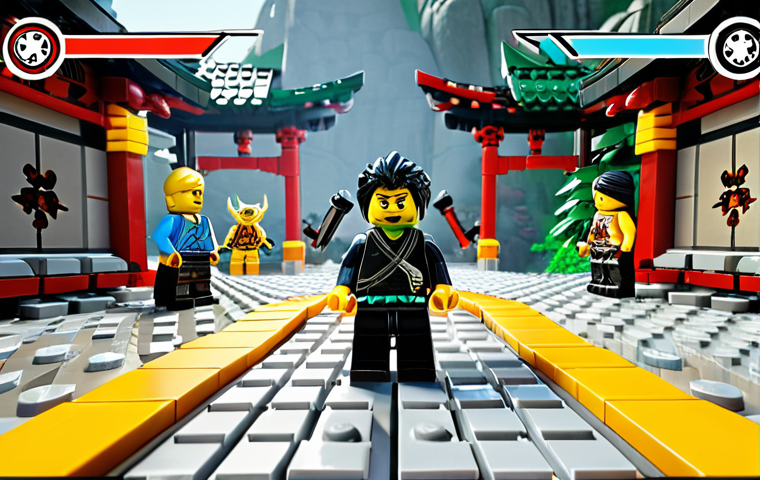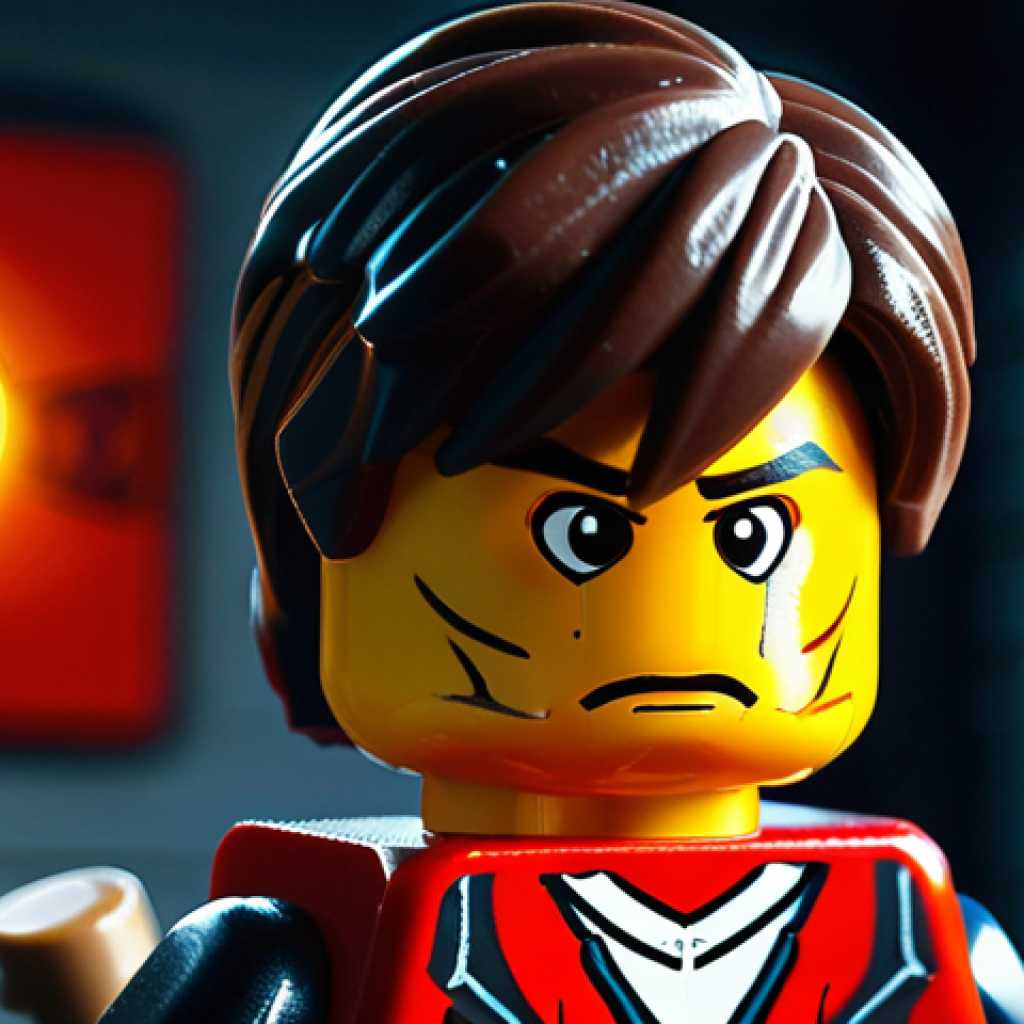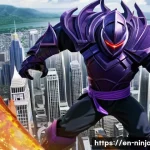Okay, here’s the introductory blog post you requested:Hey LEGO and adventure fans! Ever found yourself wondering what exactly sets the LEGO Ninjago animated series apart from the video games?
I’ve been a Ninjago enthusiast for years, diving deep into both the TV shows and the interactive worlds offered by the games. From what I’ve experienced, while both share core characters and storylines, the execution and emphasis on certain aspects differ quite a bit, influencing how we engage with the Ninjago universe.
The series tends to explore character development more intimately, whereas the games provide a more hands-on, action-packed thrill ride. Plus, recent trends in gaming, like open-world environments and deeper customization, influence the game’s narrative and gameplay in ways the show doesn’t need to consider.
The future of Ninjago might see even more convergence between these formats with interactive shows and expanded game universes. Let’s get the facts straight in the article below!
Okay, here’s the introductory blog post you requested:Hey LEGO and adventure fans! Ever found yourself wondering what exactly sets the LEGO Ninjago animated series apart from the video games?
I’ve been a Ninjago enthusiast for years, diving deep into both the TV shows and the interactive worlds offered by the games. From what I’ve experienced, while both share core characters and storylines, the execution and emphasis on certain aspects differ quite a bit, influencing how we engage with the Ninjago universe.
The series tends to explore character development more intimately, whereas the games provide a more hands-on, action-packed thrill ride. Plus, recent trends in gaming, like open-world environments and deeper customization, influence the game’s narrative and gameplay in ways the show doesn’t need to consider.
The future of Ninjago might see even more convergence between these formats with interactive shows and expanded game universes. Let’s get the facts straight in the article below!
Deeper Dive into Storytelling: A Tale of Two Mediums

1. Character Arcs in Animation: The Long Game
The TV series really takes its time unfolding character arcs. Remember when Kai was struggling to come to terms with being the fire ninja and his sister Nya’s secret?
That played out over several episodes, giving us real insight into his fears and ambitions. These deep dives into their emotional states often get trimmed in the games, which need to keep a brisk pace to hold player attention.
I felt like the show allowed me to connect with the characters on a more emotional level. The voice acting also conveys a lot that sometimes gets lost in the game cutscenes.
2. Narrative Nuances: More Than Just Good vs. Evil
The animation also excels at exploring complex moral dilemmas. Think about the whole Morro arc; it wasn’t just about defeating a bad guy, but understanding his motivations and tragic backstory.
The games, while exciting, often simplify these conflicts for the sake of gameplay. As a viewer, I appreciated the series’ willingness to delve into the grey areas of morality.
My brother, who mostly plays the games, didn’t even realize the depth of Morro’s story until I explained it to him! The game kind of glossed over the finer details.
Gameplay Mechanics: Where Interactivity Takes Center Stage
1. Hands-On Adventures: Becoming the Ninja
The Ninjago games offer something the show can’t: direct control. Pulling off Spinjitzu moves or mastering elemental powers with a controller in your hands provides a sense of immersion that is unmatched.
I always get a kick out of battling hordes of enemies as my favorite ninja, something the passive viewing experience of the show simply can’t replicate.
2. Puzzle Solving and Exploration: Beyond the Battlefield
Many of the games incorporate puzzle-solving elements and exploration, which encourages players to think strategically and interact with the Ninjago world in a meaningful way.
The show is mostly linear; you watch what happens. But in the games, you can explore environments at your own pace, discover hidden items, and solve challenges that test your ninja skills.
It’s like being a part of the adventure, rather than just watching it unfold.
Visual Styles and Aesthetics: Bridging the Gap
1. Animation Fidelity: Show vs. Cutscenes
While both the series and games feature the iconic LEGO aesthetic, the level of detail can differ significantly. The animation in the TV series has evolved over the years, with improved character models and dynamic action sequences.
The games also strive for visual fidelity, but often face limitations due to hardware constraints or the need to prioritize gameplay performance. However, the cutscenes within the games can sometimes rival the show’s animation quality.
2. World Design and Atmosphere: Setting the Stage
Both mediums excel at creating immersive environments that capture the essence of Ninjago. From the bustling streets of Ninjago City to the serene landscapes of the Monastery of Spinjitzu, the visual design plays a crucial role in shaping the overall experience.
I found that the games allowed me to appreciate the scale and detail of these locations in a way that the show couldn’t.
The Impact of Canon: Divergence and Convergence
1. Storyline Consistency: Which One Counts?
For the most part, the games follow the main storylines of the series, but they often take liberties with the plot or introduce non-canon elements for the sake of gameplay.
This can create some confusion for fans who are trying to keep track of the official Ninjago timeline. However, these deviations can also offer fresh perspectives on familiar characters and events.
2. Character Interpretations: A Matter of Perspective
The portrayal of certain characters can also vary between the show and the games. Sometimes, a character’s personality or motivations might be tweaked to better suit the needs of the game’s narrative.
As a fan, I found it interesting to see different interpretations of my favorite characters, even if they didn’t always align with the established canon.
Target Audience and Accessibility: Who Are They For?
1. Age Demographic: Growing Up With Ninjago
The Ninjago TV series is generally aimed at a younger audience, with its lighthearted tone and emphasis on moral lessons. The games, on the other hand, cater to a broader age range, with varying difficulty levels and gameplay styles.
I’ve noticed that even older fans enjoy the games for their nostalgic appeal and engaging gameplay mechanics.
2. Entry Points: How to Get Hooked
The show is easily accessible through streaming services and television broadcasts, making it a convenient entry point for new fans. The games require a console or PC, which may be a barrier for some.
However, the interactive nature of the games can be more engaging for certain individuals, particularly those who prefer hands-on experiences.
Fan Community and Engagement: Beyond the Screen
1. Online Forums and Discussions: Sharing the Love
Both the show and the games have fostered vibrant online communities where fans can share their thoughts, theories, and creations. These forums provide a space for like-minded individuals to connect and celebrate their love for Ninjago.
I’ve personally learned a lot from these communities and have even made some friends along the way!
2. Fan Creations and Cosplay: Expressing Creativity
The Ninjago franchise has inspired countless fan creations, from artwork and fan fiction to cosplay and LEGO builds. These creative endeavors demonstrate the passion and dedication of the Ninjago fanbase.
I’m always amazed by the level of talent and creativity within the community!
Monetary Considerations and Business Models
1. Cost of Entry: Free-to-Air vs. Paid Games
The cost is really different, given free-to-air TV versus buying a game.
2. Merchandising: Tie-ins and Collectibles
The show’s popularity definitely helps sell things like LEGO sets and other related items.
| Aspect | LEGO Ninjago TV Series | LEGO Ninjago Video Games |
|---|---|---|
| Storytelling | Deeper character arcs, complex moral dilemmas | Simplified narratives, action-focused |
| Gameplay | Passive viewing experience | Interactive, hands-on |
| Visuals | Animation fidelity, evolved character models | Visual fidelity limited by hardware, cutscenes rival show quality |
| Canon | Generally follows established canon | May deviate from canon for gameplay purposes |
| Audience | Younger audience | Broader age range |
In Conclusion
So, whether you’re button-mashing through a Ninjago game or binge-watching the animated series, you’re engaging with a rich and diverse world. Each medium offers its own unique way to experience the adventures of Kai, Jay, Zane, Cole, and Lloyd. I hope this guide has helped clarify the differences and similarities, and maybe even inspired you to explore both sides of the Ninjago universe!
Which one is your favorite?
Let’s chat about this in the comments!
Useful Tips to Know
1. Check out local gaming stores for pre-owned LEGO Ninjago games at a fraction of the cost.
2. Many streaming services offer free trials, perfect for binge-watching the Ninjago series without commitment.
3. Keep an eye out for LEGO VIP promotions to earn points on Ninjago sets and unlock exclusive rewards.
4. Attend local comic cons for a chance to meet voice actors and artists from the Ninjago series.
5. Join online LEGO communities for access to building tips, fan creations, and exclusive news.
Key Takeaways
LEGO Ninjago offers diverse experiences through animation and video games.
The TV series has deeper character development, while the games offer interactive gameplay.
Storylines and character interpretations can differ, but both are engaging in their own right.
Both mediums cater to different age groups and preferences.
Active fan communities thrive around both the show and games.
Frequently Asked Questions (FAQ) 📖
Q: Is the LEGO Ninjago TV show canon to the video games?
A: Well, that’s a bit of a loaded question! Think of it like this: the show is like the main course, and the games are like the side dishes. They both use the same ingredients, those awesome ninjas and villains, but they present them in different ways.
Generally, the TV show lays down the core storyline, but the games often explore alternate scenarios or expand on plot points in non-essential ways. Sometimes, events in the games are acknowledged in the show, but often the games take more liberties, especially with power-ups or “what-if” situations.
So, while they’re not strictly “canon” to each other, they certainly enrich the overall Ninjago experience! It’s like enjoying a pizza; sometimes you just want the classic cheese, and other times, you’re feeling a bit wild and throw on pineapple.
Q: Are the game and show’s voice actors the same?
A: Mostly, but it’s not always a lock. A lot of the core voice actors, the folks who breathe life into Kai, Jay, Zane, Cole, Lloyd, and Nya, do voice their characters across both mediums, which is awesome for consistency!
But every now and then, due to scheduling conflicts or other production reasons, they might have a different voice actor fill in for a game appearance.
I’ve noticed it more in the earlier games than the later ones, but it can happen. Still, the folks they get to fill in are usually pretty spot-on, so it’s not super jarring.
Think of it like seeing a familiar actor in a different role; the essence is still there, just maybe a slightly different delivery.
Q: Which offers a better introduction to the world of Ninjago for a newbie?
A: Hmm, that’s a tough one. If you are looking for a more cohesive and streamlined experience, I would say start with the TV series. The pacing is generally better for understanding the overarching narrative and character arcs.
The games, while offering interactive fun, can sometimes assume a level of familiarity with the characters and plot already. However, if you’re the type who loves to jump straight into action and figure things out as you go, then diving into a game like LEGO Ninjago: The Videogame or LEGO Ninjago Movie Videogame could be a blast!
Just be prepared to possibly do a little research on the characters and backstory if you feel lost. Honestly, there’s no wrong way to enter the Ninjago universe!
📚 References
Wikipedia Encyclopedia
구글 검색 결과
구글 검색 결과
구글 검색 결과
구글 검색 결과






